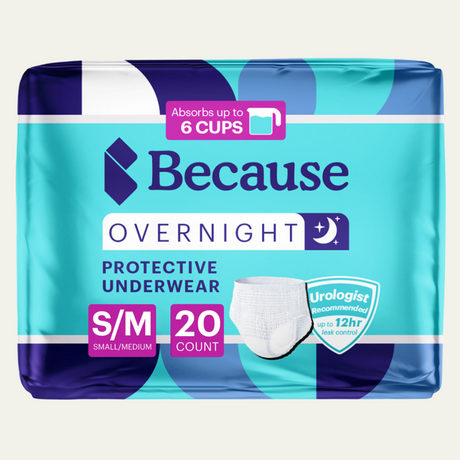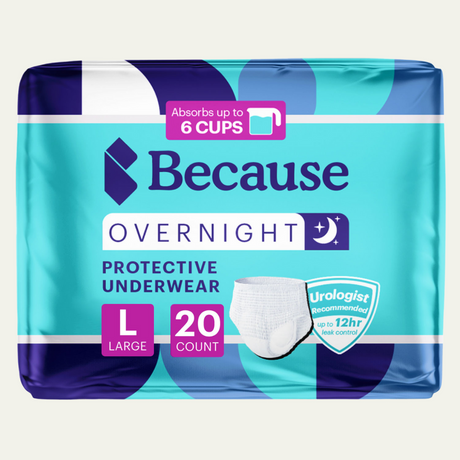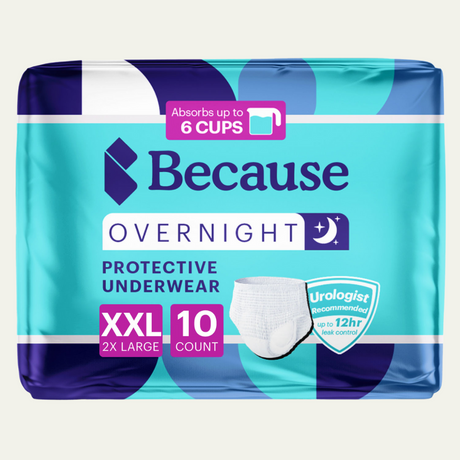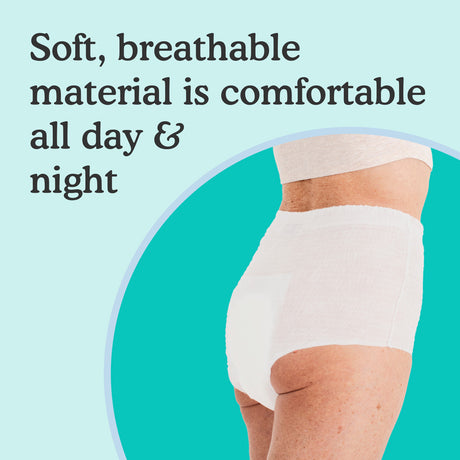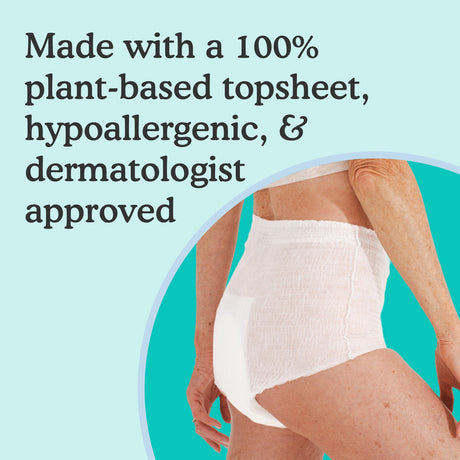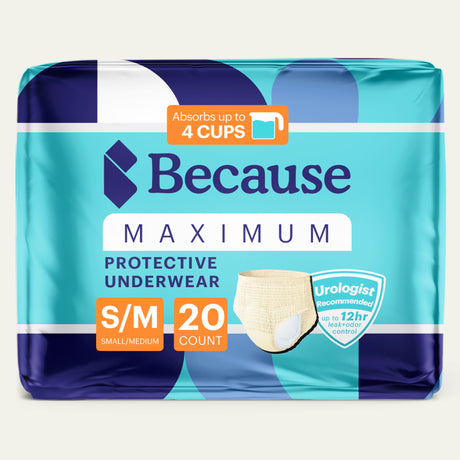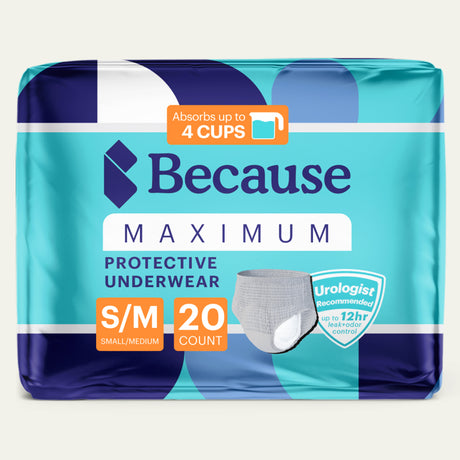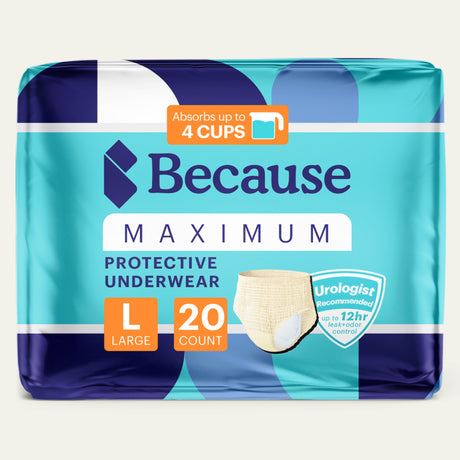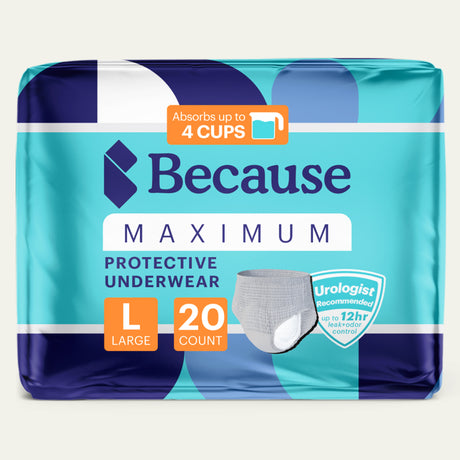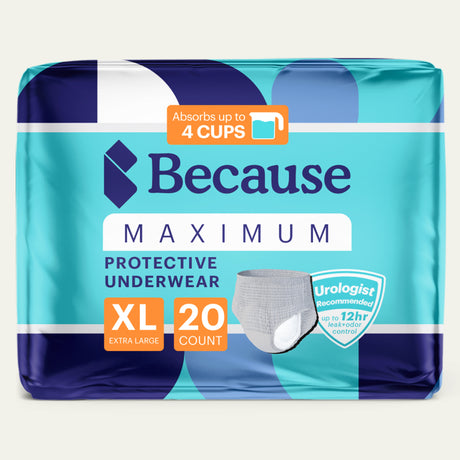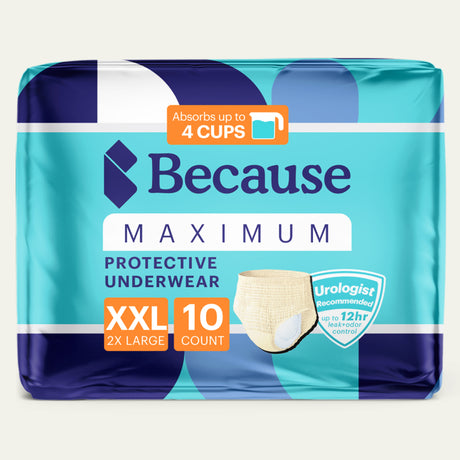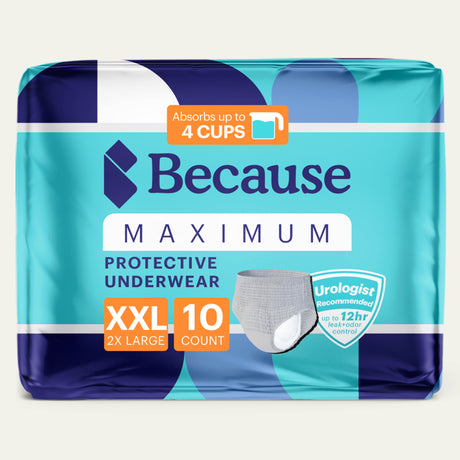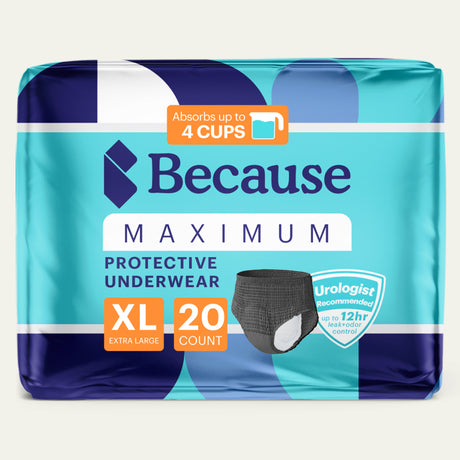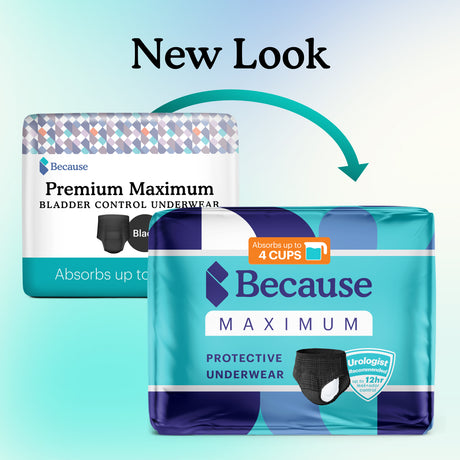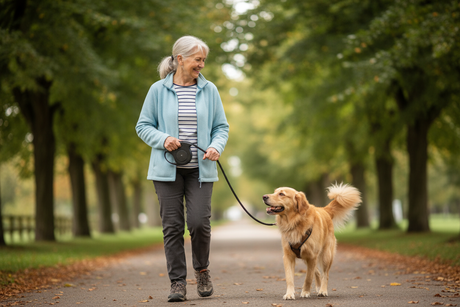What Is Urinary Incontinence?
Urinary incontinence is a blanket term for poor bladder control. Men and women with urinary incontinence may experience occasional leaks or a complete loss of bladder control that results in accidents. There are a few types of incontinence:
- Stress incontinence: Also known as stress UI, this type usually occurs when the pelvic floor muscles that support the bladder become weak. Stress incontinence in men may also happen due to pressure from an enlarged prostate. As a result, urine may escape the bladder when a person coughs, sneezes, laughs, or exercises.
- Urge incontinence: With urge incontinence, you experience a sudden intense need to use the bathroom. In elderly people with mobility issues, urge incontinence can make it challenging to get to the toilet quickly. Urge incontinence can happen due to problems with the nerves and muscles in the bladder from medical conditions, injuries, and other causes.
- Overflow incontinence: This type of incontinence happens when the bladder doesn’t empty fully or the full-bladder message doesn’t get transmitted to the brain properly. When the bladder becomes too full, urine may leak out.
- Functional incontinence: A person doesn’t have an underlying bladder problem with this type of incontinence. Instead, a disability or mobility issue interferes with getting to the bathroom or undressing to use the toilet, resulting in accidents.
Another condition that is affected by caffeine intake and is frequently associated with incontinence is overactive bladder or OAB. Overactive bladder causes sudden, strong urges to go which may result in incontinence.
Talk to your doctor if you suffer from a leaky bladder, accidents, urinary urgency, or frequent urination. They can determine what type of urinary incontinence you have and recommend the best treatment and lifestyle changes for managing your symptoms.
What Is Caffeine and How Does It Affect the Body?

Caffeine is in portions of plants like coffee beans, kola nuts, tea leaves, and cocoa pods. Caffeine amounts in foods and drinks vary, but it’s generally present in coffee, tea, soda, energy drinks, and chocolate. Some supplements for weight loss and increasing concentration also contain caffeine.
Studies have found that caffeine has many effects on the body. Let’s look at some of the ways it may affect you.
Increases Nervous System Activity
Caffeine stimulates the brain and the rest of the central nervous system. When it does, heart rate and blood flow increase. These qualities of caffeine make you feel more awake and energetic when you drink it. High caffeine intake can cause side effects like nervousness and shakiness.
By boosting nervous system activity, caffeine also raises blood pressure. Although it usually isn’t the primary cause of hypertension, caffeine can worsen high blood pressure. This effect also increases the risk of damage to the kidneys associated with the condition.
Acts as a Diuretic
Caffeine is a diuretic (something that increases urine production). In 2016, researchers from Belgium concluded that the diuretic effects of caffeine are likely because it attaches to receptors in the kidneys, interfering with proteins that regulate urine production.
Because caffeine is a diuretic, you’ll urinate more when you consume foods and drinks that contain this natural chemical. Increasing urine production can potentially worsen symptoms of any type of incontinence.
Dehydration is another worry for people with incontinence. If you don’t drink enough water and other fluids, your urine can become concentrated — increasing the risk of bladder irritation and incontinence symptoms. Drinks that contain caffeine support fluid intake, so they’re unlikely to lead to dehydration. However, eating large quantities of foods that contain caffeine (like chocolate and energy bars) could cause dehydration from increased urination.
Causes Irritation
Foods and drinks, like caffeine, can irritate the bladder, leading to increased urinary incontinence symptoms. In some people, alcohol can also contribute to bladder inflammation. As a result, healthcare providers often suggest people with incontinence limit their daily caffeine and alcohol intake.
One new study conducted in 2022 revealed that people with urge incontinence were less likely to consume caffeine than those who didn’t have the condition, thanks to the advice of medical professionals. Interestingly, this study also found that people with urge incontinence who didn’t avoid caffeine consumed similar amounts to people without incontinence.
Some people may be more sensitive to caffeine than others. For these individuals, caffeine consumption may worsen urinary incontinence symptoms. Those without caffeine sensitivity may not experience bladder irritation or may be able to consume more caffeine before experiencing increased urinary problems.
Can Caffeine Cause Urinary Incontinence?

There is an undeniable link between caffeine and urinary incontinence due to the diuretic and inflammatory effects of the substance. Caffeine isn’t the underlying cause of incontinence. If you already suffer from incontinence, caffeine could worsen your symptoms.
Does Caffeine Increase Urine Output?
Because it acts as a diuretic, caffeine can increase urine output. As previously mentioned, caffeine doesn’t affect everyone the same way. For some people, light to moderate caffeine intake may not lead to much of a noticeable increase in urine output, while for others — the differences may be dramatic.
Can Caffeine Cause UTI Symptoms?
Symptoms of bladder irritation include a strong need to urinate, pain and burning when urinating, increased urination, and passing only small amounts of urine when going to the bathroom. People sensitive to caffeine may experience these symptoms when they consume food and drinks that contain the stimulant. These symptoms are similar to what men and women experience when they have urinary tract infections (UTIs). However, UTI symptoms are more likely to be severe, last longer, and worsen over time.
Caffeine doesn’t cause urinary tract infections. People usually develop them when bacteria get trapped inside the urinary tract, increasing the chance of infection. Since caffeine can cause bladder irritation, it could worsen UTI symptoms or trigger symptoms that seem like a UTI.
Should I Give Up Coffee If I Have Urinary Incontinence?
Whether or not you should give up coffee depends on whether or not you’re sensitive to caffeine. If you are, giving up coffee or switching to decaffeinated coffee could reduce your symptoms.
Unfortunately, it can be challenging to know if you’re caffeine-sensitive. One way to tell is to keep track of what you eat and drink in a food diary. Each day, rate the severity of your urinary incontinence symptoms on a scale of 1 to 10 and describe them. You may also want to write down the temperature and weather conditions because we often urinate more when it’s cold and wet outside.
Over time, you can look at the recorded data to see if there’s a connection between how much caffeine you consumed and your symptoms. If you experience severe UI only on days when you drink coffee, that’s a good indication that a caffeine restriction may benefit you.
How Much Caffeine Am I Consuming?

The milligrams (mg) of caffeine tell you how much you consume. The specific number of milligrams of caffeine in foods and beverages varies from product to product. Manufacturers aren’t required to provide the amount of caffeine per serving on the label. That’s why it can be difficult to know the amount of caffeine you consume.
The U.S. National Library of Medicine provides the following reference information to help you estimate your intake:
- One 8-ounce cup of coffee contains 95 to 200 mg of caffeine
- One 12-ounce can of soda contains 35 to 45 mg of caffeine
- One 8-ounce energy drink contains 70 to 100 mg of caffeine
- One 8-ounce cup of tea contains 14 to 60 mg of caffeine
How Much Caffeine is Too Much for People with UI?
No single recommended limit exists for how much caffeine someone with urinary incontinence can consume. How much is right for you depends on the following:
- The severity of your symptoms: If you have severe UTI symptoms like frequent, complete involuntary urine loss, you may need to decrease your intake more than someone with only minor symptoms.
- Caffeine sensitivity: How sensitive you are to caffeine is one of the most significant factors in determining how much caffeine you should consume.
- Your fluid intake: If you don’t drink enough fluids, caffeine may be more concentrated in your urine, increasing the risk of irritation.
- What medications you take: If you take medications that irritate the bladder or act as diuretics, you may need to limit your caffeine intake more.
- Your treatment plan: If you’re diligently performing pelvic floor exercises, taking medications or supplements, or using a bladder control device to reduce your symptoms, you may be able to drink one or two cups of coffee.
Talk to your healthcare provider about caffeine intake. They can provide personalized guidelines regarding how much you can consume daily.
Tips to Reduce Your Caffeine Intake
For success cutting back on caffeine, follow these tips.
Start Slowly
If you drink a lot of coffee, tea, or soda, you may experience withdrawal symptoms if you suddenly give up caffeine. These include nausea, problems concentrating, irritability, headaches, and drowsiness. Instead of quitting cold turkey, scale back by half a cup or one cup at a time to gradually wean yourself off caffeine.
Read Labels and Do Research
Check labels on beverages and foods to see if they contain caffeine. Check their official website if the manufacturer doesn’t tell you how much caffeine is in something. Customer service representatives for the company should also be able to provide the information if you contact them by phone or email.
Switch to Decaf
If your morning coffee or afternoon tea is a part of your daily routine, try switching to decaf. This way, you can continue to enjoy sipping without the caffeine content.
Increase Your Fluid Intake
If you eliminate a daily soda or cup of coffee from your daily routine, make up for the reduction in fluids by drinking something else (like water or fruit juice with no added sugar). This habit can reduce the risk of you getting dehydrated from drinking less.
Does your loved one struggle with incontinence? Take our bladder protection quiz and get a sample pack to try.
If you're struggling with incontinence, join one of our private support groups today!
Women's Incontinence Support Group
Men's Incontinence Support Group
Sources:
**Borawski, K. M., Wilkins, E. G., Sreedhar, S. S., **Harte, S. E., Borawski, K. M., Wilkins, E. G., & Sreedhar, S. S. (2016). Impact of Coffee Consumption on Type 2 Diabetes-Induced Bladder Dysfunction and Potential Impact on Human Excitability. Neurourology and Urodynamics, 35(8), 969-975. https://pubmed.ncbi.nlm.nih.gov/27225921/
**Borawski, K. M., Wilkins, E. G., Harte, S. E., & Sreedhar, S. S. (2020). Caffeine and Bladder Function: Implications for Patients with Overactive Bladder. Neurourology and Urodynamics, 39(6), 1656-1663. https://onlinelibrary.wiley.com/doi/full/10.1002/nau.25070
MedlinePlus. (n.d.). Caffeine. https://medlineplus.gov/caffeine.html


